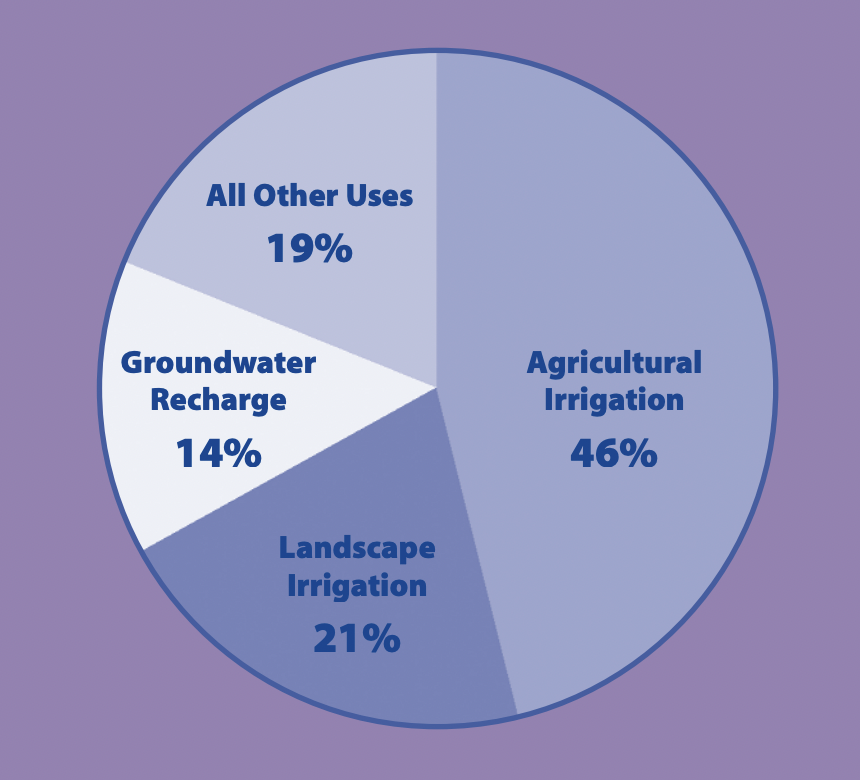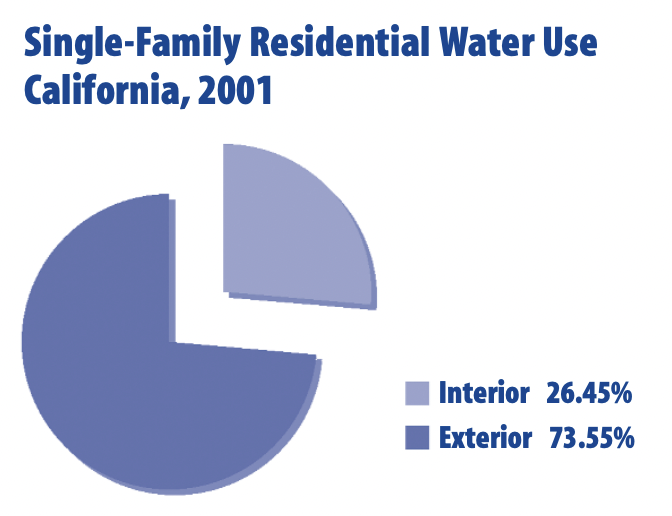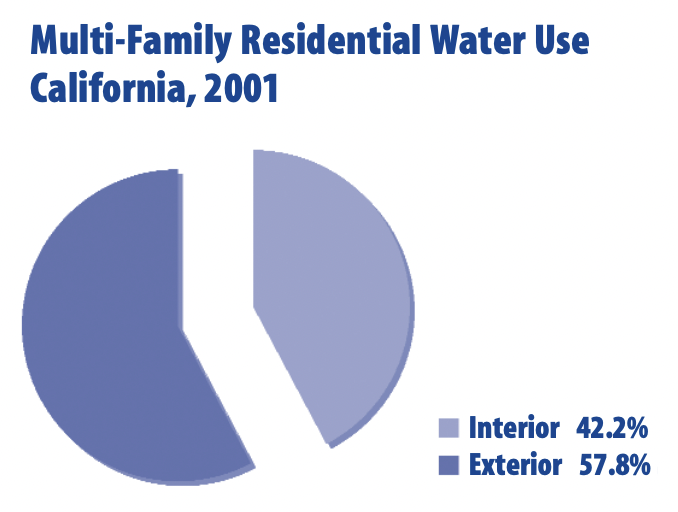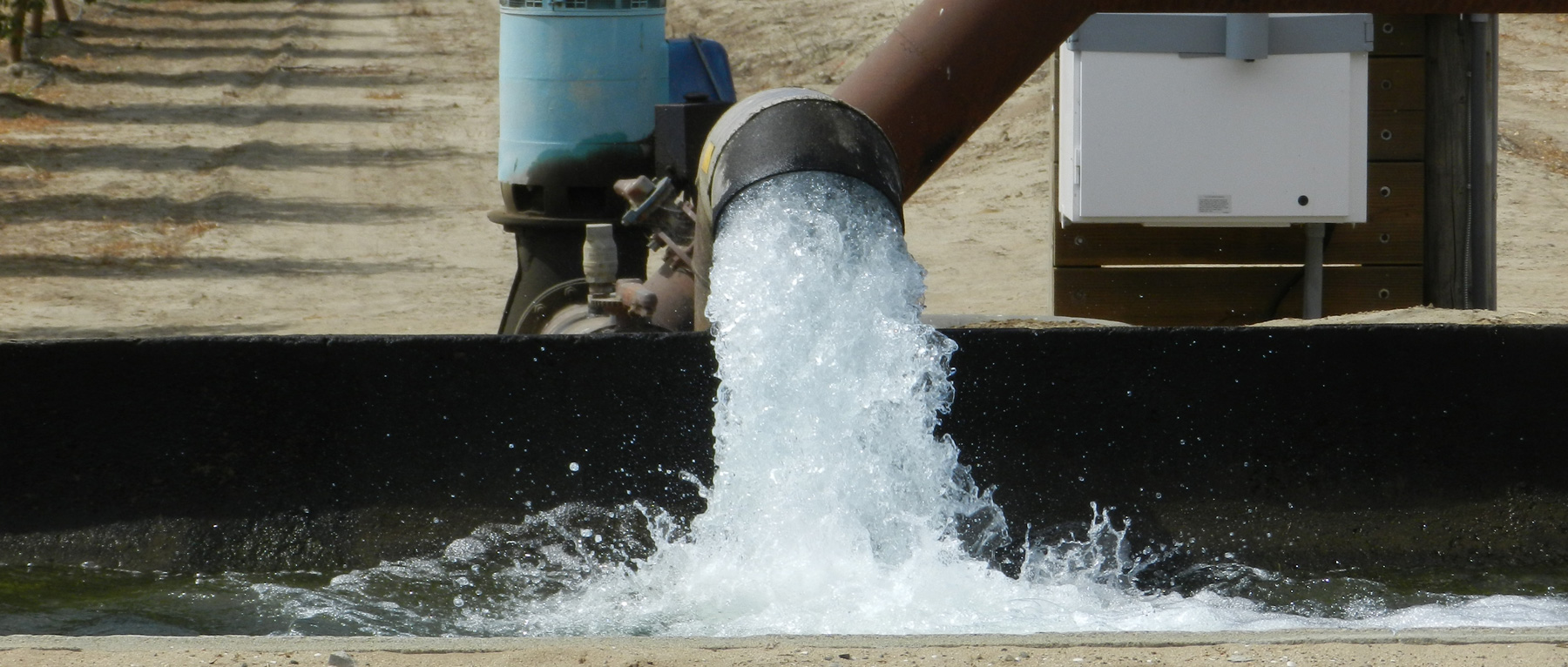Water Recycling and Reuse
March 15, 2014
Water Recycling and Reuse Fact Sheet
Our precious water supplies can be safely used more than once. This fact sheet addresses California laws that encourage or require the use of recycled water, recycling and reuse techniques, and case studies of communities that are aggressively pursuing these options.
Download PDF: Water Recycling and Reuse
“California has the potential to recycle enough water to meet 30-50% of the household water needs of our projected population growth.”
-California Recycled Water Task Force
Getting More Out of the Water We Have
The development of traditional water resources in California has not kept pace with population growth; and, to make matters worse, California is subject to periodic droughts.
To meet the water demands of California’s growing population and protect against droughts, local governments must make the most efficient use of their water resources. Water recycling and reuse offer cost-effective, multi-benefit solutions.
Water recycling means the use of treated wastewater for appropriate purposes. Water reuse involves using untreated, uncontaminated wastewater – from bathtubs, showers, bathroom washbasins, clothes washing machines and laundry tubs – a second time around, for an appropriate purpose. Both strategies represent reliable sources that protect communities from water shortages.
Recycling: Using Water More than Once Works
California Water Code Section 13550-13556 states that using potable domestic water for non-potable uses, including cemeteries, golf courses, parks, industrial and residential irrigation, and toilet flushing, is an unreasonable use of potable water if recycled water is available.
It is safe to use recycled water. There has never been a documented case in the United States of disease or other public-health problem related to the use of recycled water that meets established standards.
California has more than 300 water recycling plants in operation. As of 2004, California communities were using recycled water at 4,800 sites.
Recycled water can be counted as a source of water to meet the requirements of new state “show me the water” laws that require developers to prove that enough water is available to serve proposed new housing.
Recycled Water Is Safe and Successful
Early anxiety about recycled water has lessened as several successful recycling programs have come online over the past decade. Two notable examples include:
The Irvine Ranch Water District’s innovative dual water system provides recycled water to commercial high rises for use in flushing toilets and urinals.
The South Bay Water Recycling Program distributes recycled water to over 400 customers in the San Jose area for irrigation, industrial and other purposes.
How Recycled Water Is Used in California



Look Outside for Savings: A large majority of the water used by residents – 74% in single-family homes and 58% at multi-family locations – is for landscaping and other outdoor uses. Putting recycled water to work outside can help communities to reduce the total amount of residential water used, and reduce water costs.
Purple Pipe Makes Recycled Water Clear
Purple pipe is a key component of dual plumbing systems that enable homeowners, businesses, industry and public facilities to use recycled water outside and potable drinking water indoors.
Water managers wanted a way to make sure that recycled water wouldn’t get mixed with potable water – and purple became the universal color for recycled water.
Today, pipes and other materials carrying recycled water are clearly marked purple to eliminate any confusion.
Purple pipe is just like other PVC piping, except that it carries reclaimed water rather than fresh.
Two Northern California Communities Put Recycled Water to Outside Uses
Windsor
The Town of Windsor is saving about 275 million gallons of drinking water a year by irrigating 400 acres of golf course, vineyard, parks, pasture and fodder croplands with recycled water. A new housing development also uses recycled water to irrigate front yards and offers residents the option of using reduced-cost water that is recycled to irrigate backyards.
Rohnert Park
The City of Rohnert Park has been using recycled water to reduce use of potable water supplies since 1988. Approximately 510 acres of land are irrigated with recycled water, saving more than three million gallons per day of potable city water. An extensive distribution system distributes recycled water to golf courses, city parks, school grounds and commercial properties. These and other communities in Sonoma County have found that recycling water is also reducing wastewater discharges to the Russian River, which is prone to chronic flooding.
Economic Implications
Recycling water saves money and energy – and the water supply
Recycling existing water supplies can be less expensive than purchasing new supplies.
Example: Orange County’s Groundwater Replenishment System treats water to the quality of bottled water so that it can be safely pumped into potable groundwater supplies and provide a buffer against saltwater intrusion. The system will eventually provide water for 144,000 families.
Despite $486.9 million in construction costs, the Groundwater Replenishment System produces greater benefits for its cost than the alternatives. It will also use 50% less energy than importing water, resulting in additional savings.
Recycling and reusing water in Southern California reduces the enormous cost of energy required to import water to the southern part of the state.
Environmental Benefits
Recycling and reusing water may allow communities to leave fresh water in rivers and streams to protect fish and wildlife. This can be critical during times of drought when river and stream flows can become low and warm, leading to fish-kills. Recycled water can be used to enhance or restore wetlands that provide wildlife habitats, improved water quality and recreational amenities.
El Dorado Hills’ Recycling Plans
El Dorado Hills’ Serrano is one of the first master-planned communities to use recycled water to irrigate the front and back yards of residential units – a total of 3,400 homes. Recycled water is also used to irrigate common areas, golf courses and the landscape around an elementary school. Due to Serrano’s success, the El Dorado Irrigation District – which saved millions in treatment costs and reduced discharges – is now asking that all new developments in the region adopt programs similar to Serrano’s whenever feasible. Homeowners are reaping the benefits as well through reduced water bills.
What Local Government Can Do
- Lead by example. Include dual plumbing in all new municipal facilities. Use recycled water to irrigate municipal parks and other landscaped areas.
- Require the installation of dual plumbing. In communities where recycled water is available, state law requires the installation of dual plumbing systems in new construction. To avoid confusion, the recycled water is carried in purple pipes. Cities and counties that currently do not have a recycled water treatment system can require dual plumbing systems in new construction and in buildings when they are substantially remodeled. They will be building the infrastructure for recycled water when it is available in the future.
- Adopt a water recycling ordinance, which might read: It is the policy of [name of jurisdiction] that recycled water determined to be available pursuant to Section 13550 of the Water Code shall be used for nonpotable uses within the designated Recycled Water Use Areas (established by each local jurisdiction). Recycled water shall be used wherever there is not an alternative higher or better use for the recycled water, its use is economically justified, financially and technically feasible, and consistent with legal requirements and the preservation of public health, safety and welfare, and the environment.
- Partner with other cities, counties, wastewater providers and water suppliers in regional, collaborative efforts, especially in Integrated Regional Water Management Plans, to develop recycled-water projects.
- Locate land uses conducive to using recycled water, such as golf courses, large institutional landscapes and large industrial facilities, in locations convenient to existing treatment plants, pipelines or other facilities.
- Start a public education campaign long before you provide recycled water to your community. Orange County has been implementing such a campaign for a number of years in anticipation of the start of their Groundwater Replenishment System that puts recycled water into the water table, then withdraws it for potable uses.
Cities and counties that currently do not have a recycled water treatment system can require dual plumbing systems in new construction and in buildings when they are substantially remodeled. They will be building the infrastructure for recycled water when it is available in the future.
Graywater = Water Reuse
More than half of the water used inside our homes is suitable for reuse – up to 40 gallons a day. State law (California Water Code Section 14875-14877.3) allows county and city health departments to allow a system to be attached to a home’s plumbing to facilitate the sanitary reuse of graywater.
Local government can require dual drains to be installed in new construction. It saves money to reuse water from the bath and shower for irrigating landscape. Installing the appropriate plumbing in a new home makes the reuse of graywater relatively simple. This is particularly useful during times of drought.
The City of Malibu inserted graywater installation requirements in its general plan: Policy 3.123 reads,“New development shall include a separate graywater treatment system where feasible.”
Suggested Language for General Plans
Dual plumbing that allows graywater from showers, sinks, and washer to be reused for landscape irrigation should be included in the infrastructure of new development.
– Ahwahnee Water Principle #3
Community design should maximize the use of recycled water for appropriate applications including outdoor irrigation, toilet flushing, and commercial and industrial processes. Purple pipe should be installed in all new construction and remodeled buildings in anticipation of the future availability of recycled water.
–Ahwahnee Water Principle #4





